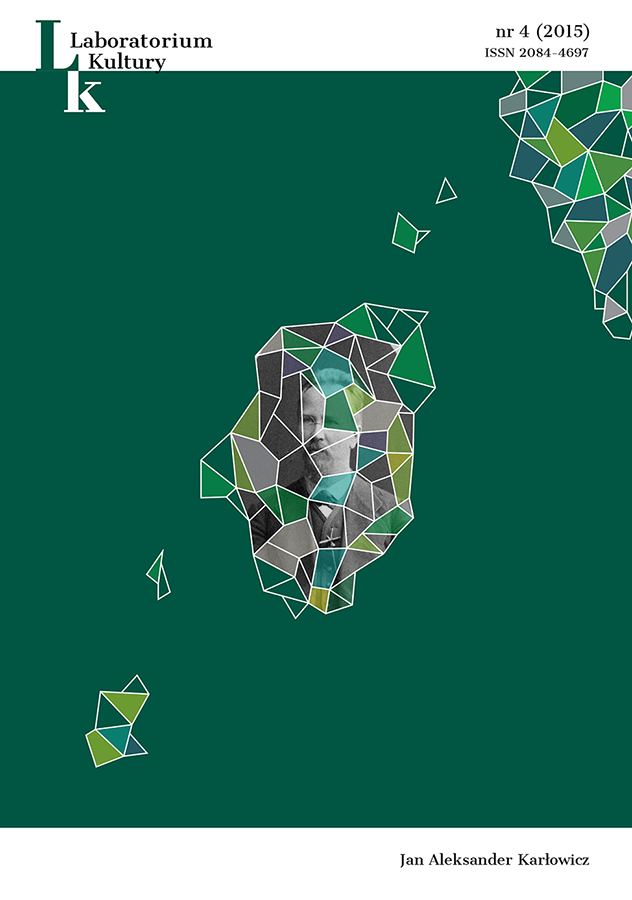
Stanisław Baj. Portrety w kontekście
Celem tekstu jest przedstawienie prezentowanych w tomie prac Stanisława Baja, artysty malarza pochodzącego z Podlasia, i zasugerowanie ich możliwego odczytania w kontekście problematyki antropologicznej.
More...We kindly inform you that, as long as the subject affiliation of our 300.000+ articles is in progress, you might get unsufficient or no results on your third level or second level search. In this case, please broaden your search criteria.

Celem tekstu jest przedstawienie prezentowanych w tomie prac Stanisława Baja, artysty malarza pochodzącego z Podlasia, i zasugerowanie ich możliwego odczytania w kontekście problematyki antropologicznej.
More...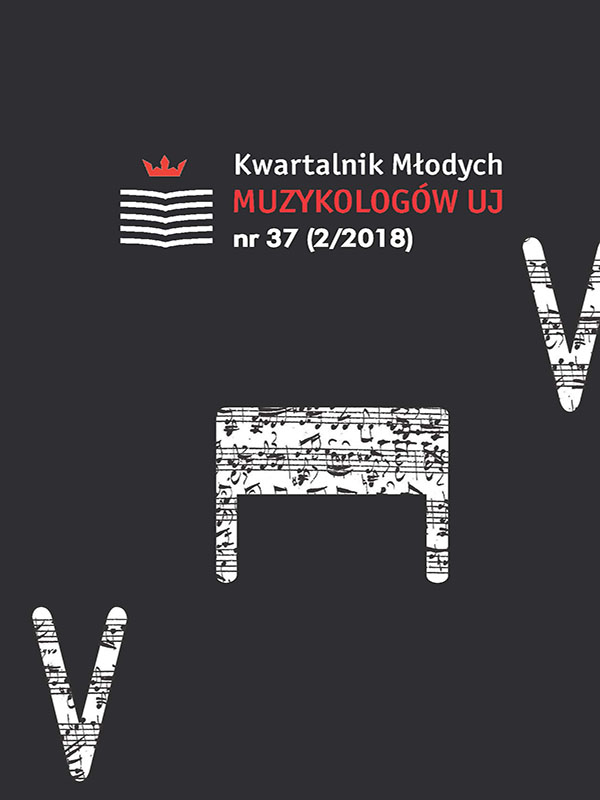
This essay aims at discussing the problem of Felix Mendelssohn’s attitude towards different religions shown in his choral piece Responsorium et Hymnus Op. 121 for male choir with cello and double bass. Considering the arguments concerning composer’s self-identity provided by Jeffrey Sposato, we could interpret the Lutheran chorale appearing at the end of this Catholic liturgical work as means by which Mendelssohn tried to manifest his Lutheran faith and therefore to criticize Catholicism.However, if we examine more carefully the very end of this composition, we would find that the musical material, characteristic for each faith, form a dialectical and dynamic relation. It seems that – instead of criticizing Catholicism – Felix showed the possibility and the necessity of different faiths to coexist, which, according to the idea of religious pluralism andtolerance proposed by composer’s grandfather, Moses Mendelssohn, is the only way to discover religious truth. At the end of this paper, I would like to propose that the reception history of Felix Mendelssohn’s work and life from the post-Wagnerian and anti-semitic criticism to so-called Mendelssohn Renaissance in the second half of 20th century also went through a dialectic course. We cannot fully understand and interpret them without taking a multi-aspect view.
More...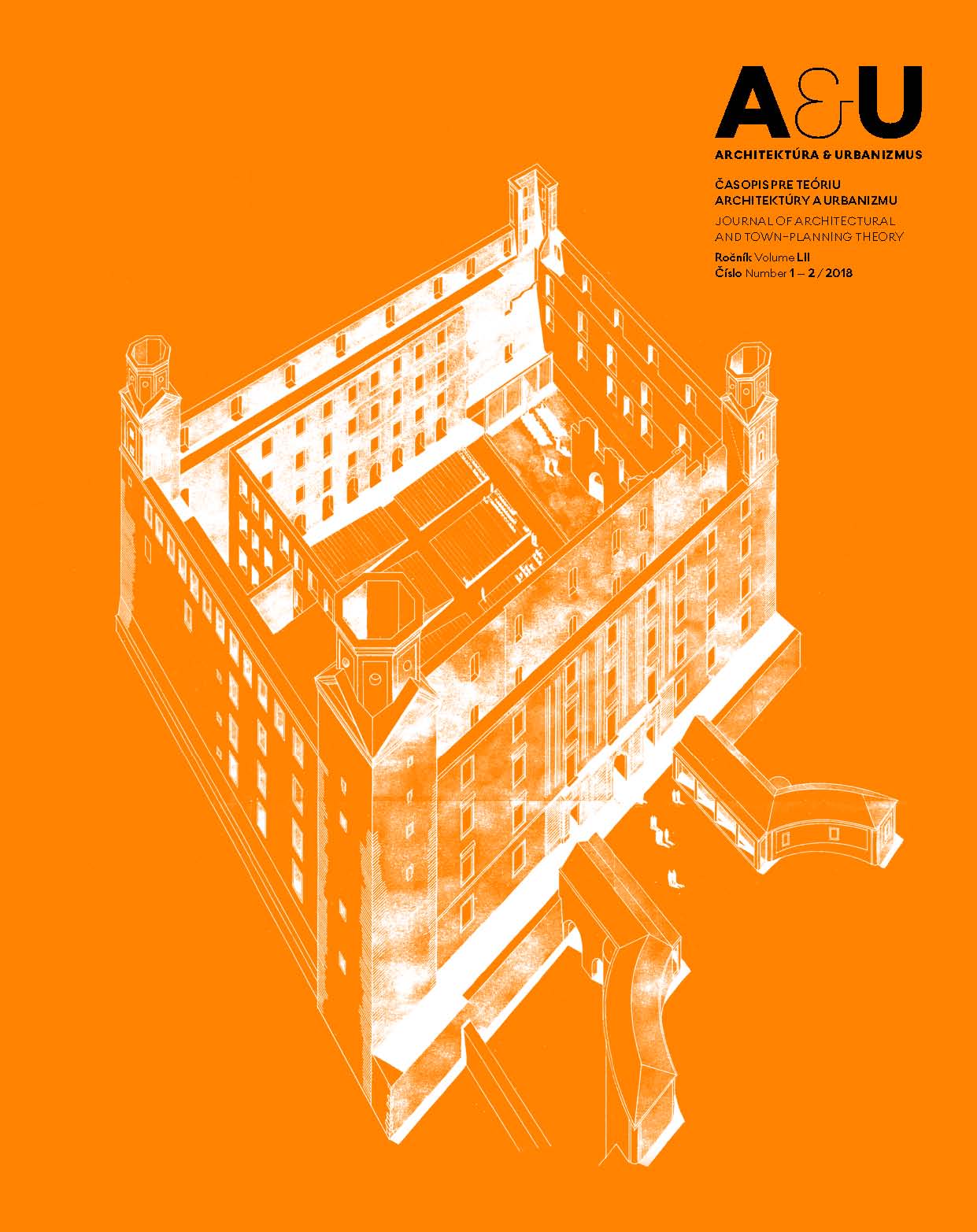
After the fire in 1811, Bratislava Castle was left an architectural and urban relic, sharply contrasting to the dynamically growing city lying below it. This iconic object and its “plinth” – the combination of Castle Hill and the neighbourhood of Podhradie below – formed a unified whole, and were interpreted as such. Though the Castle was eventually saved through the restoration process that started after the midpoint of the 20th century, Podhradie remained neglected and finally succumbed to demolition. The conundrum of one of the most visually exposed heritage sites in Slovakia has always tended to reflect social dynamics in each given period. Nor was it any different even at the start of the 20th century, when there began to appear the first calls for its restoration. Over time, the discussion grew stronger, and the spectrum of contributions spread even wider. The aim of the present study is the comparison of processes and phenomena that served as catalysers for this discussion, with the primary focus on the position of the Castle and its base in the context of Bratislava in the first half of the 20th century.
More...
The aim of the article is to deepen the theoretical and methodological concepts regarding the essence of political flash mob (political mob) as a spectacular and game-like variety of political actionism, to define the modern types of political mobs. The research methodology is based on: the model of society of spectacle (G. Debord); the simulation model (J. Baudrillard); the individualized society model (Z. Bauman); the model of society of interactive spectacle (S. Best, D. Kellner) etc. The methodology synthesized the theoretical and methodological concepts of symbolic interactionism, postmodernism and post-structuralism. The scientific novelty lies in the author’s original analysis of political mobs as a spectacular and game-like variety of political actionism technology, which consists of one-time or wave-like conduction of short-term dramatized mass actions according to a pre-agreed scenario. Conclusions. The analysis showed that political mob is a spectacular network interaction, performed on the basis of horizontal social communications. The author defined the following features of political mob: non-institutional character; organization through online resources; spectacularity, pronounced game context; chronometricty etc. There are following varieties of modern political mobs: “silent” flash mobs, online flash mobs (i-mob); wave-like relay and others. It is noted that the vast majority of political flash mobs are peaceful in their nature. It is emphasized that in some countries flash mobs are considered equal to protest actions, such as rallies and pickets, therefore their spontaneous self-organization is forbidden.
More...
The purpose of the article is to publish results of the complex study of the monument. The methodology of the research is to use the principles of historicism and comparative analysis. Specifics of material structure of the icon are identified with technical and technological studies, that included optic studies of the surface of the painting in the visible direct and side light source, in the infrared (IR-) and ultraviolet (UV-) radiation range, layered visual microscopic study of the surface of the paint layer, sampling of soil and paint layer; determination of soil composition and pigments of the paint layer. Scientific novelty is to clarify the icon’s dating, to detect its iconographic, stylistic and technical and technological features. Conclusions. Due to results of complex (stylistic, iconographic and technical and technological) studies, the icon “The Virgin of Odigitria” (Trinity Saint Elijah) (KPL-ZH-186, NKPHCR) was dated to the first third of XVIII century and connect its painting with the circle of Chernihiv’s masters who worked at Kyiv-Pechersk Lavra then.
More...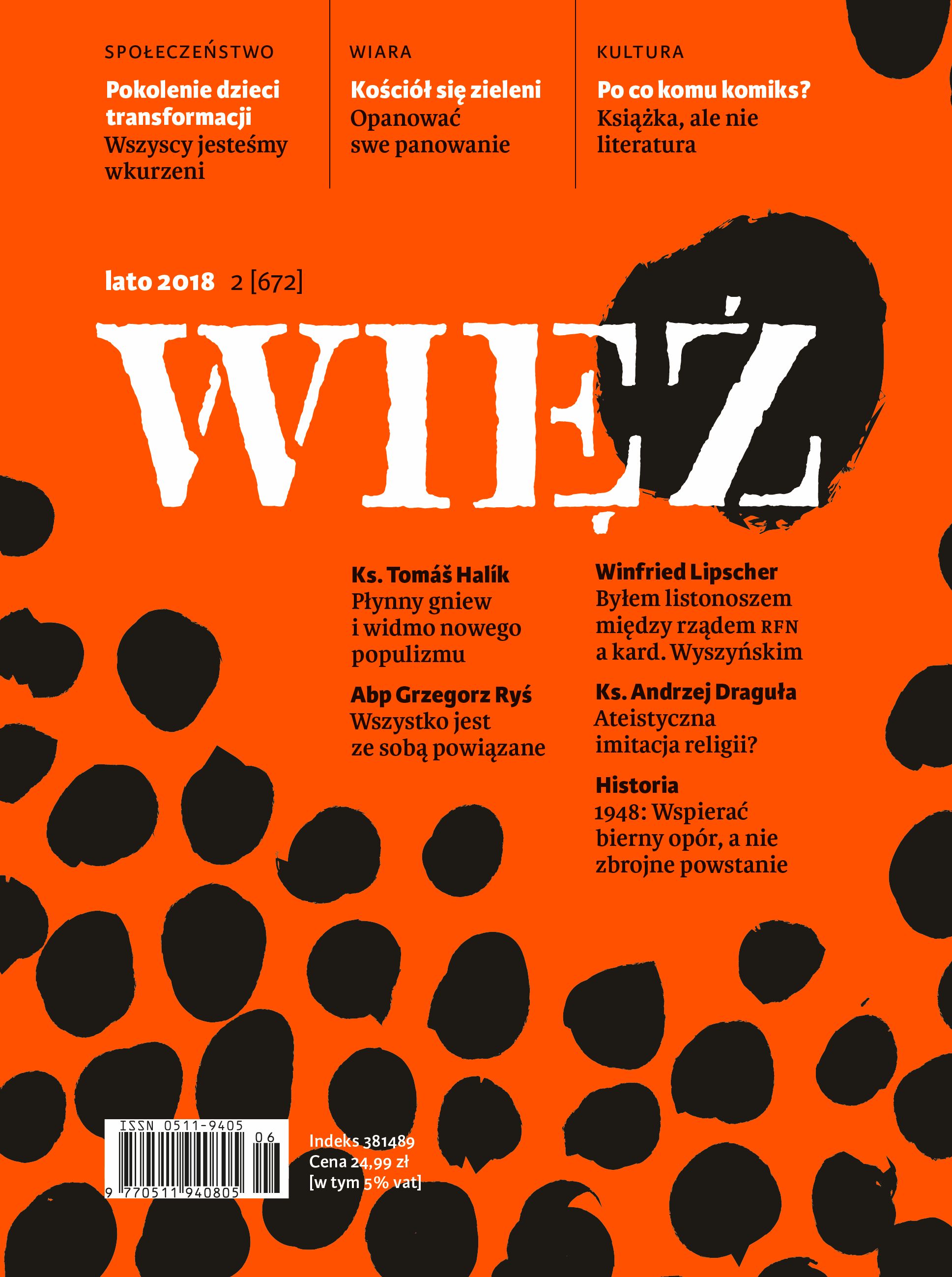
Od młodszej generacji różni mnie i moich rówieśnikówsposób, w jaki zostaliśmy wychowani. Kiedy byliśmymali, kładło się nam do głowy, że tylko pracąi wysiłkiem można do czegoś dojść. Bez tego nie byłobymnie w miejscu, w którym jestem teraz.
More...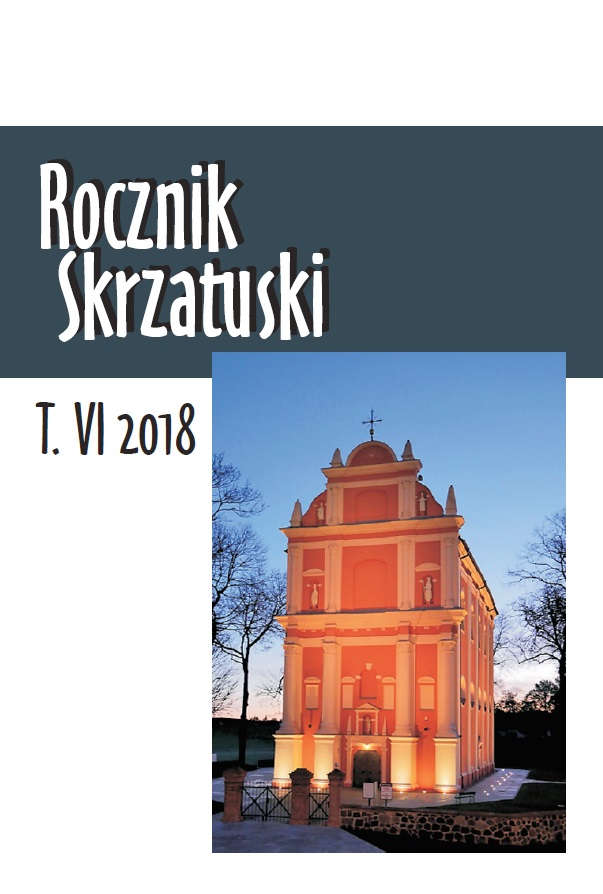
The text presents the history of organ in Skrzatusz, starting from the cost estimate in 1866 at Wilhelm Sauer in Frankfurt (Oder). The instrument with 19 voices was created in 1874, and its construction was carried out by the said Sauer factory. The time of building the work is confirmed by both hand-written files and until now unknown company's catalog from 1882, printed on the occasion of its 25-year jubilee. In 2004, the building underwent a major renovation and this time is the final date of development. The article contains copies and abstracts of German-language messages about the preservation of the old music choir together with a dummy built-in – a positive, a remnant of a former instrument. This study is the first in a series of organ history in Skrzatusz.
More...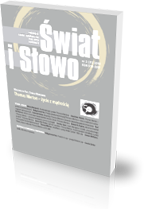
The paper concentrates on the new representations of human consciousness in digital cinema which reflect contemporary culture’s fixation on the cerebral. As digital cinema’s divorce from the photographic base has allowed to produce virtual worlds, many of them are situated literally in the protagonist’s mind. The new representations of consciousness in film tap into philosophical and scientific notions of time and temporality as well as into the discoveries of neuroscience and quantum physics. Some of these discoveries represented in film offer the possibility of release from the restrictions of the physical body, which can be exemplified by Duncan Jones’s Source Code (2011). In the film the protagonist’s consciousness is repeatedly transferred to another man’s body locked in the past segment of space-time, in which he splits into a multiplicity of selves. This provokes the question: is the protagonist’s personhood continued after the transfer of consciousness? To answer that, one needs to take into account the bodily-continuity theory and the psychological continuity theory of personal identity, yet they can only partly be applied to Source Code because they rely on the classical notion of linear time. As technoculture has triggered a radical redefinition of space and time, what follows is the need for a reformulation of the understanding of human identity. The essay explores the film’s designation of personal identity, applicable to the information age.
More...
The novel Phantom of the Opera is one of the most famous literally works of Gaston Leroux. In the article, we focus on the identity of phantom and the presentation of phantom in diverse artistic productions. The theme of love and music is a source of an inspiration for many other authors. The novel is very topical up till now.
More...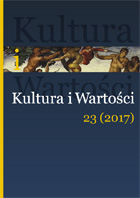
Described is the creativity of women in visual arts following their debut about the year 2000. Women artists representing this Polish feminist art movement are drawing inspiration from their everyday life experienced in their social roles traditionally attributed to women as housewives, wives and mothers. Revolting in face of consequent impediments to building their career, berating hints by some as to maintaining the traditional role of women in society and taking issue with critics derogating the feminist art movement, the artists set out to portray aspects of their vocational life and consequences of being a woman in an artistically paradoxical way. Viewers long used to extended metaphors and hidden symbols are invited by the artists to intuit women’s everyday life experiences, challenge gender stereotypes and reflect on values.
More...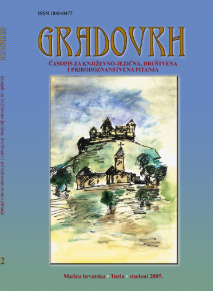
Od vremena svoga dolaska u Bosnu koncem XIII. stoljeća franjevci su izgrađivali vlastiti odnos prema likovnoj umjetnosti kao jednom obliku duhovnog rada u vjerničkome puku. Poticaji za to bili su, prije svega, praktične naravi, tj. nakana da se sadržaj vjere učini razumljivim i pristupačnim, ali također i da se on umjetnički izrazi kroz ljepotu oblika i arhitektonski sklad te na taj način postane i vizualno privlačnijim.
More...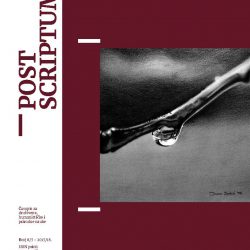
The usual, but overtaken classification of the goals of the teaching fine arts are divided into educational and pedagogical. However, a large number of serious pedagogues and methodologies, whose attitudes and opinions the author fully agrees with, as the goal of teaching of fine art, distinguishes the therapeutic goals, apart from the above mentioned goals. As a part of teaching of fine art, the therapeutic goals are the most important for the teaching of fine arts in working with vulnerable categories students, because through this goal the teacher can be introduced to the inner world, psychology and social needs of each student, and especially those with whom the usual communication is difficult or even disabled. We’ll deal with the definition of the term art therapy, the one that is often misinterpreted and misunderstood, its origin, different theories and approaches, but also point out the differences in relation to arts in therapy.
More...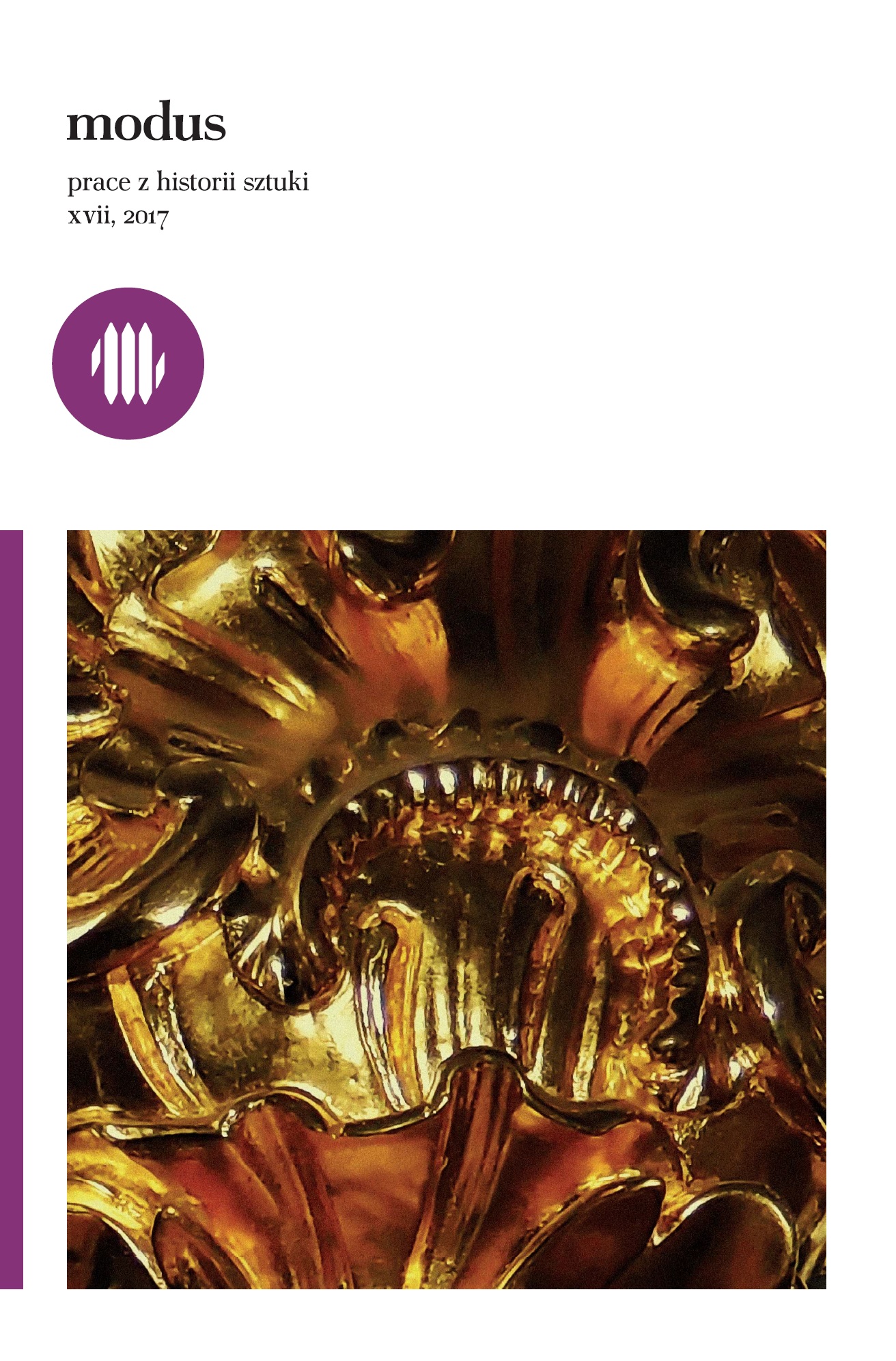
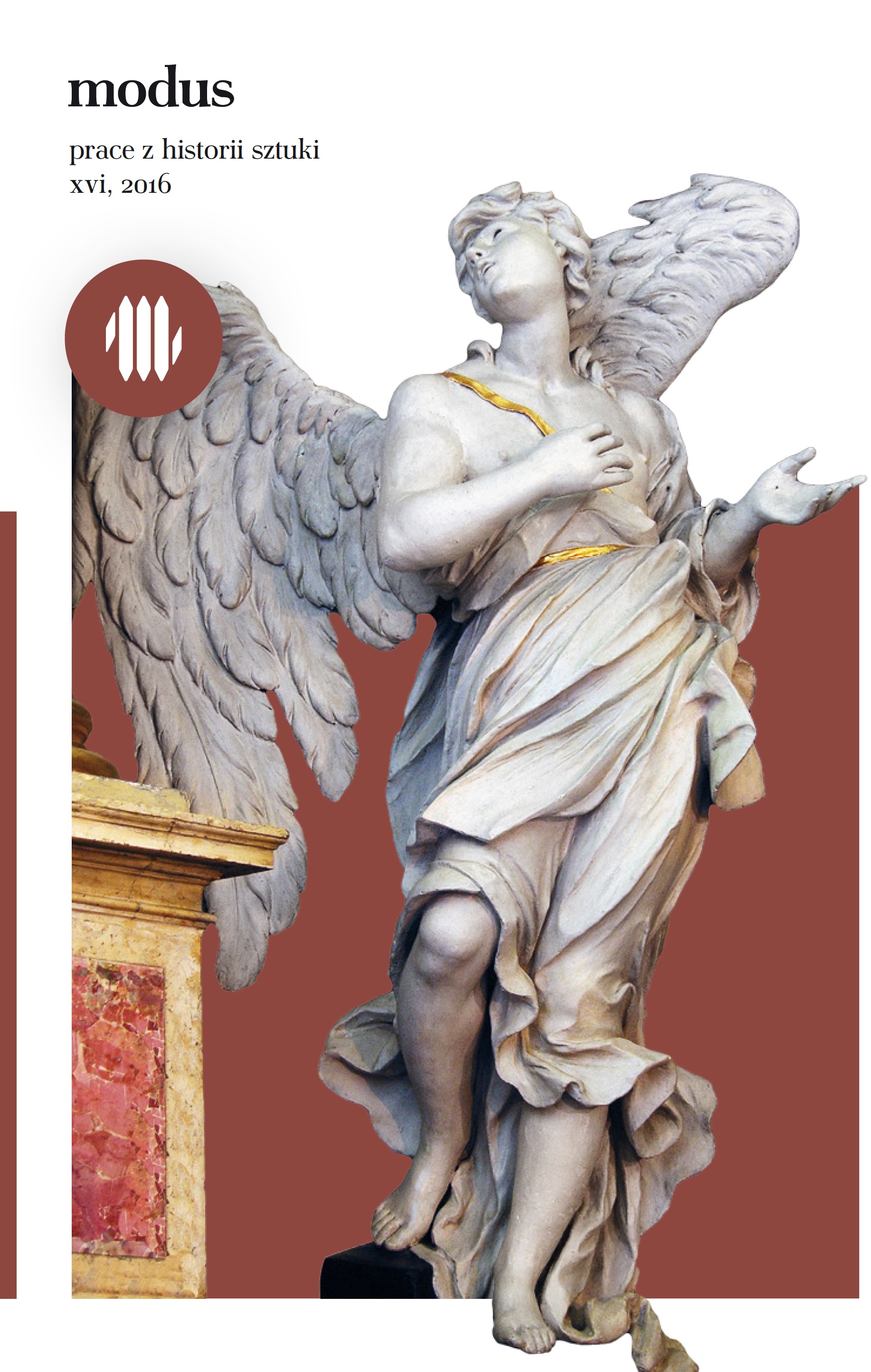
Architectural form of non existing synagogue in Koniecpol did not stand outamong a large group of 19th-century neoclassical synagogues in former territory of PolishCommonwealth. But, because of a small amount of research material (most of 19th‑centurysynagogues vanished during II WW and the Communist period) the possibility of reconstructionit’s architectural form can be helpful in In the study of Jewish architecture. So farin the scientific literature an opinion existed, that the synagogue in Koniecpol was erectedin the mid nineteenth century. Insightful research has led to the correction of this informationand moved the moment of the synagogue’s founding in its final form to the ninetiesof the nineteenth century.By conducting a comparative analysis of other synagogues with the spatial arrangementand architectonic decoration similar to the synagogue in Koniecpol, located in the southernpart of Congress Poland we can mark a line of development of the type of a synagogue withlongitudinal section and a façade in the form of a portico. It also led us to determine theoriginal pattern, which turned out to be a project created by Piotr Chrystian Aigner.The problem of classical motifs in synagogue architecture in this area has not been sufficientlystudied, primarily because of the small group of preserved buildings. Therefore,the following article is not only a monographic work of the history of the synagogue inKoniecpol. It constitutes a basis for researching the architectonic type, widely representedin the 19th-century synagogue architecture in the Polish lands.
More...
Cel badań. Przeprowadzone badania oscylują wokół zabarwienia emocjonalnego deskrypcji do reprodukcji malarskich. Punkt wyjścia dla rozważań nad audiodeskrypcją jest podział dokonany przez Romana Jakobsona, wedle którego audiodeskrypcja daje się sklasyfikować jako intersemiotyczny typ tłumaczenia audiowizualnego. W artykule zostaje podany zarys audiodeskrypcji w Polsce oraz jej ogólne ujęcie w dyskursie naukowym. Zwraca się uwagę również na dwa podejścia do tworzenia opisów audiowizualnych – niemieckie (zadaniowe i techniczne) oraz polskie (artystyczne i nastawione na wzbudzenie emocji u niewidomego odbiorcy). Celem badań jest ukazanie połączenia dydaktyki i przekazu emocji w audiodeskrypcji i określenie ich funkcji. Metodologia. Przedmiotem badań jest publikacja Beaty Jerzakowskiej Posłuchać obrazów, w skład której wchodzą deskrypcje do obrazów z Podstawy programowej dla uczniów gimnazjum i liceum. W ramach artykułu dokonana zostaje analiza jakościowa dwóch deskrypcji pod kątem językowym, para-tekstualnym oraz z uwzględnieniem elementów dydaktycznych. Wyniki. Audiodeskrypcja jest komunikatem emocji, która pomaga uczniom rozwijać swoją wrażliwość i poznawać nowe konteksty kulturowe. Wnioski. Deskrypcje spełniają funkcję artystyczną, ponieważ zastępują warstwę wizualną wyjściowego dzieła. Poza tym badane audiodeskrypcje niosą ze sobą funkcję edukacyjną, ponieważ stanowią uzupełnienie kształcenia literackiego i językowego uczniów. Kolejną funkcją audiodeskrypcji jest ich pragmatyzm – autorka książki świadomie łamie przyjęte standardy tworzenia audiodeskrypcji, dodając do opisów m. in. pytania retoryczne, metafory i synestezje. Ponadto dydaktyzm i próba przekazu emocji uwidaczniają się również w warstwie brzmieniowej tekstu oraz w muzyce wkomponowanej w każdą z AD.
More...
Teza. Przedmiotem artykułu była analiza transformacji tożsamości miejskiej w oparciu o architekturę i tkankę miejską. Teza autorki zakładała, że architektura odgrywa rolę w budowaniu miejskiej tożsamości, co zaprezentowano na przykładzie dwóch polskich miast. Wraz z transformacją przestrzeni miejskiej następuje zmiana postrzegania miast, nie tylko przez mieszkańców, lecz także na arenie narodowej i międzynarodowej. Ważną role pełnią nowo powstające instytucje o charakterze edukacyjnym i historycznym, takie jak Europejskie Centrum Solidarności czy Muzeum Śląskie.Omówione koncepcje. W pracy wykorzystano teorie modyfikacji oraz nawarstwienia stosowane przez Ewę Rewers w analizie tożsamości miejskiej. W badaniach powołano się także na rolę ideologii w kreowaniu i projektowaniu miast. Analizie poddano aplikacje, jakie zostały zgłoszone przez miasta w konkursie na Europejską Stolicę Kultury.Wyniki i wnioski. Transformacja i rola architektury odgrywa znaczącą rolę w budowaniu tożsamości miejskiej. Dodatkowo miasta poprzez projektowane instytucje podkreślają swoją rolę w budowaniu polskiej historii (instytucje muzealne) oraz walczą z negatywną stereotypizacją (rewitalizacja opuszczonych zakładów przemysłowych). Istotną rolę odgrywa także rewitalizacja obszarów przemysłowych, która pozwala na stworzenie mostu między historycznymi oraz współczesnymi przestrzeniami miejskimi.Oryginalność/wartość poznawcza podejścia. Temat artykułu łączy w sobie analizy z pogranicza urbanistyki, socjologii, architektury i sztuk wizualnych. Podejście humanistyczno-techniczne pozwala na głębszą analizę tematu tożsamości miejskiej oraz potraktowanie miasta jako przedmiotu nauki, a nie tylko tła dla toczącego się w mieście życia codziennego.
More...
Cel badań. Celem badania było określenie roli, jaką odegrały Scuole w rozwoju malarstwa weneckiego w XV wieku, a tym samym lepsze zrozumienie i określenie znaczenia uwarunkowań społeczno-religijnych dla rozwoju malarstwa weneckiego.Metodologia. Przedmiotem badania stały się trzy cykle malarskie pochodzące ze Scuoli weneckich: Cykl legendy św. Urszuli Carpaccia, Cykl legendy Krzyża Świętego Carpaccia i Genilego Belliniego oraz Cykl ze Scuoli di San Giorgio degli Schiavoni Carpaccia (w szczególności zaś obrazy: Cud relikwii Krzyża Świętego na Rialto oraz Wizja św. Augustyna Carpaccia). Zostały one przeanalizowane w kontekście opisanych wcześniej szczegółowo przemian społeczno-religijnych w XV-wiecznej Wenecji, jak również zasad i idei funkcjonowania Scuoli.Wyniki. Przeprowadzona analiza pozwoliła lepiej dostrzec i zdefiniować rolę specyficznie weneckich organizacji, jakimi były Scuole, w rozwoju malarstwa. Scuole, pozwalające mieszczanom osiągnąć duże znaczenie społeczne, dawały również swego rodzaju możliwość objęcia zbiorowego patronatu nad sztuką i sprzyjały jej rozwojowi poprzez zamawianie dzieł o nowatorskiej tematyce.Wnioski. Z analizy wynika, że społeczeństwo weneckie zrzeszone w Scuolach, miało ogromny wpływ na rozwój artystyczny własnego miasta, głównie pod względem rozwoju tematycznego malarstwa. Dzięki zamawianiu przedstawień procesji i uroczystości, Scuole sprawiły, że do obrazów wprowadzone zostały tematy świeckie i przedstawienia miasta prekursorskie względem o wiele późniejszych wedut.
More...
Cel badań: Artykuł przedstawia rozważania na temat poszukiwania w utworze Valerie a týden divů autorstwa Vítězslava Nezvala związków z psychoanalityczną teorią Zygmunta Freuda. Książka o nastolatce poszukującej własnej tożsamości została napisana w latach 30. XX w. w Czechach i należy do gatunku prozy inicjacyjnej, ale posiada także pewne surrealistyczne elementy.Metodologia: Po opisie atmosfery awangardy i kontekstu historycznego, a także związków nadrealizmu i psychoanalizy autorka artykułu przechodzi do analizy utworu Valerie a týden divů. Na podstawie wybranych elementów fabuły i poszczególnych bohaterów odwołuje się do koncepcji podświadomości, archetypów, kompleksu Edypa i romansu rodzinnego. Oprócz rozważań Z. Freuda autorka opiera się na pozycji Bruna Bettelheima Cudowne i pożyteczne : znaczenie i doniosłość baśni, aby na podstawie przykładów ukazać drogę inicjacji Valerie w dorosłość oraz poszukiwanie własnej seksualności. Dla analizy przydatne również okazuje się rozgraniczenie sfery sacrum oraz profanum.Wyniki: Analiza bohaterów i wybranych elementów fabuły pozwoliła odnaleźć połączenia z psychoanalizą.Wnioski: Analiza pozwoliła dojść do wnisoku, że związki z podświadomością są w utworze widocznie zarysowane, co szczególnie przejawia się w erotycznych opisach oraz archetypicznych bohaterach.
More...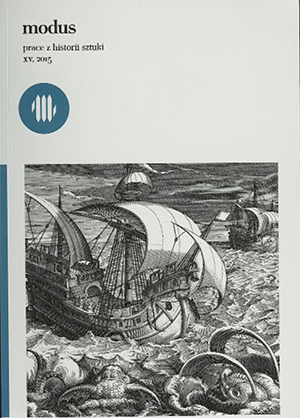
The iconography of holy persons was aimed at edifying the faithful and developing their morals. Yet, sometimes it was controversial and provoked actions that have marred the history of the Church or the reputation of secular authorities that collaborated with it. Particularly contentious was the brutal and gruesome iconography of the blessed Simon of Trent, an infant from the second half of the fifteenth century who, purportedly, was to have fallen victim to a ritual murder committed by Jews. The iconography of the martyr significantly influenced the negative perception of the Jews in the entire Early Modern period. The belief in the veracity of the ritual murders has persisted throughout the nineteenth and twentieth centuries, and sometimes finds its supporters even in the twenty-first century. A history of Simon and similar cases of purported ritual murders for which the Jews were to blame, yielded inconceivable stories that in the eyes of the Catholics (and sometimes also Protestants or even Muslims) misrepresented the image of the Jewish community. The story of Simon of Trent, full of mystifications, and other similarly manipulated accounts created an opportunity, for the lay and clergy alike, to exploit the fears of the faithful to the benefit of their own, often mundane, purposes.Accusations based on ridiculous proofs had terrible consequences: trials, tortures, death, and in the best case, confiscation of goods and exile.The iconography of Simon of Trent, formulated at the turn of the sixteenth century became a 'model' for representing victims of purported ritual murders, as can be seen in the seventeenth- and eighteenth-century images of Andrew of Rinn in Tyrol (the 'little martyr who probably never existed) or the currently very controversial eighteenth-century painting from Sandomierz Cathedral which should be considered as a 'true image of the tortures that were allegedly inflicted on Christian infants killed by the representatives of the local Jewish community. A colouring book lor children that appeared in 2002 with the story of St Gabriel of Zabłudów (late seventeenth century), an infant martyr of theOrthodox Church whose relics have been venerated in the Orthodox Cathedral of Białystok, is a curiosity.The mystification that accompanied the iconography of Simon of Trent as well as the depictions of other victims of purported ritual murders, have perpetuated in the consciousness of many generations of Christians a belief in the veracity of the satanic conspiracy of Jews against the believers in Christ. False accusations of ritual murders onChristian children provoked horrifying consequences, of which the Jews were the victims.Detrimental slander as well as other indeed outlandish fabrications, impossible to be accepted from a rational, theological and moral point of view, were favourably received by - sometimes manipulated - faith, ignorance and hearsay which, when skilfully handled, resulted in the development of anti-Semitism. Despite the reactions of the Church aimed at verifying the veracity and sanctity of the victims of the alleged rituals and its efforts intended to make up for the unfair treatment of the Jewish community in the past, the credence given to such ridiculous rituals persists. It appears in the form of a belief that there is a Jewish conspiracy against the world, in controversies surrounding the painting at Sandomierz Cathedral or finally in the seemingly innocent colouring book for children in which, under the guise of naive drawings, dwells a belief in the veracity of ritual murders committed
More...
Polish seventeenth-century sacred painting has for a long time been outside the main scope of the research interests of historians of early modern art. The findings of respected scholars from half a century ago have nowadays been mechanically repeated, both in specialist and popular publications, in spite of the fact that the same scholars, at the end of their careers, had postulated a revision of the results of their earlier research. Contemporisation as a tendency in Polish early modern painting was described for the first time by Władysław Tomkiewicz in his classic study published in 1951. Yet the political situation and ideological constraints of the period had influenced the methodology employed by the scholar, and many of his findings and observations included in this work did not stand the test of time.The phenomenon of contemporisation, understood as a conscious and deliberate depiction in a religious painting of references to the present, consisting, for example, of portraits in assfsfenza and crypto-portraits, contemporary costume, allusions to local staffage and employing elements of local architecture and landscape as well as - more or less explicit - references to the current political, religious and social situation, is nota typically Polish tendency. What is more, it is neither immediately related to the post-Tridentine era, nor is it restricted exclusively to fine arts. Similar iconographic solutions appear almost all over Europe. Their beginnings reach back to the Middle Ages and various contemporisation devices can be found in nearly all aspects of religious culture, starting from literature and homiletics, through theatre and mystery plays, to music.A researcher who undertakes an attempt at analysing and interpreting contemporised works of sacred art is faced with a number of methodological problems resulting, above all, from the scarcity of written documentary sources and the usually mediocre artistic quality of the analysed works. In order not to yield to the temptation of constructing cascading hypotheses based on meagre premises, it is necessary to exercise a scholarly restraint and to get the possibly deepest insight into the context in which a given painting arose and the purpose for which it was made, and then to inscribe the work in the general cultural tendencies of the epoch. The context can be built by conscious and critical use of the results of other disciplines dealing with the study of cultural history. It is only through juxtaposing a work of art with literature, ritual and custom that one can arrive at its possibly full and obje
More...